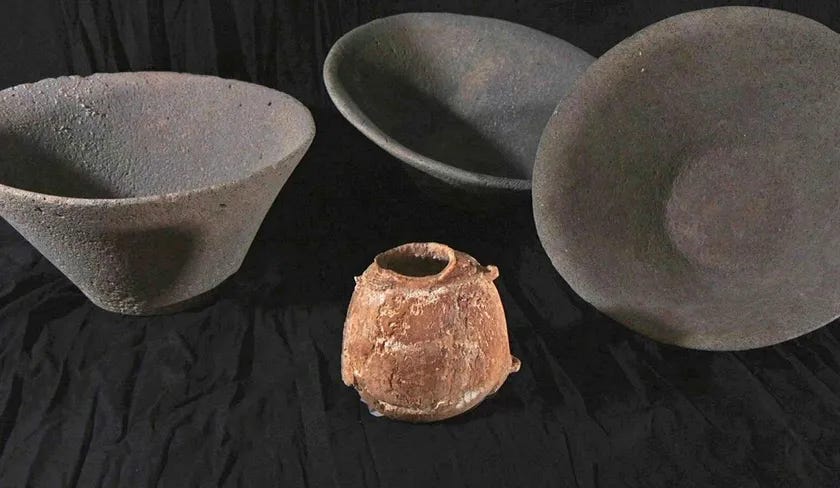Ivory Jar Unearthed Near Be'er Sheva
Manage episode 412185561 series 3444207
Unveiling a Mysterious Relic
In a groundbreaking discovery, archaeologists from the Israel Antiquities Authority (IAA) have unearthed a remarkable artifact near Be'er Sheva—a jar made of elephant ivory ritually buried over 6,000 years ago. This intriguing finding, uncovered during excavations at Horvat Raqiq, offers a tantalizing glimpse into the cultural dynamics of Chalcolithic Israel and its connections to ancient Egypt.

The Excavation Journey
The excavation at Horvat Raqiq, spearheaded by Avishai Levi-Hevroni and Martin Pasternak of the IAA, has provided invaluable insights into the ancient settlement patterns of the Negev region. Dating back to 2020, the excavation revealed a complex network of subterranean chambers and tunnels, offering a window into the daily lives of Chalcolithic inhabitants. Amidst the labyrinthine architecture, a serendipitous discovery by IAA photographer Emil Aladjem—a basalt object concealed beneath the loess soil—paved the way for an extraordinary revelation.
Unearthing the Enigma
The unassuming basalt object, upon closer inspection, revealed a hidden trove—a set of three meticulously crafted bowls nestled within each other. However, it was the innermost bowl that captured the attention of archaeologists—an ivory vessel, shattered into fragments, lay concealed within a bed of earth. Dr. Ianir Milevski, a prehistoric archaeologist affiliated with the IAA, describes the discovery as unprecedented, noting the rarity of such artifacts in the archaeological record of ancient Israel.
Deciphering Cultural Significance
The ivory amphoriskos, or small jar, presents a conundrum to researchers, offering tantalizing clues about its origin and purpose. Its distinctive design—a globular shape adorned with intricately crafted handles—bears striking resemblance to artifacts of ancient Egyptian provenance. Moreover, the presence of ivory, sourced from either African or Asian elephants, suggests the existence of extensive trade networks linking Chalcolithic Israel to the Nile Delta.
Exploring Ritual Practices
The ritual burial of the broken jar within a pit hints at deeper layers of meaning, echoing practices of secondary burial observed in various ancient cultures. Dr. Milevski speculates that the jar may have been cherished for its symbolic value, serving as a vessel for offerings or funerary rites. The significance of the broken vessel lies not only in its material composition but also in its ritual context, offering profound insights into the spiritual beliefs and cultural practices of ancient inhabitants.
A Tapestry of Interconnectedness
The discovery of the ivory jar near Be'er Sheva underscores the intricate web of cultural exchange and interaction that characterized the ancient Near East. As researchers continue to unravel the mysteries surrounding this enigmatic artifact, they uncover layers of history that transcend geographical boundaries. The ivory jar stands as a testament to the enduring legacy of ancient civilizations and the timeless allure of archaeological discovery.
9 episoder




